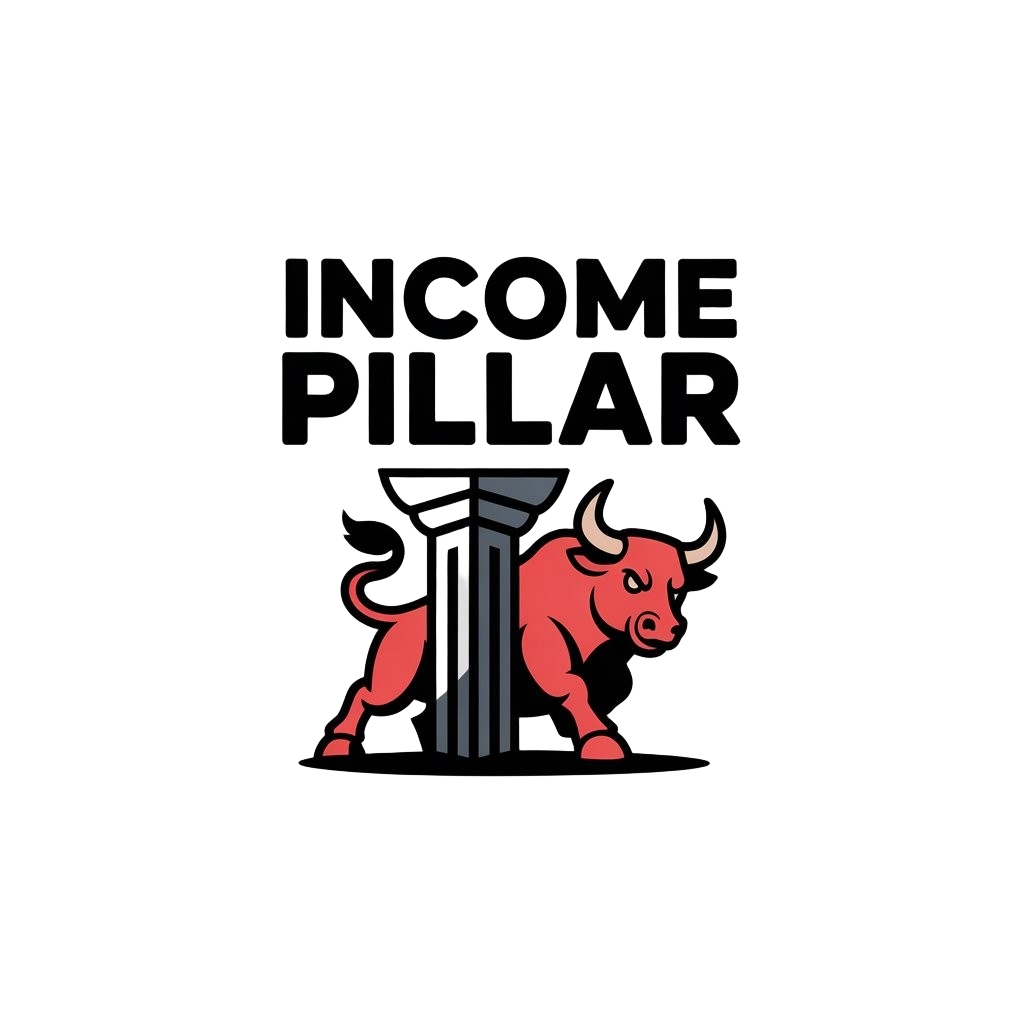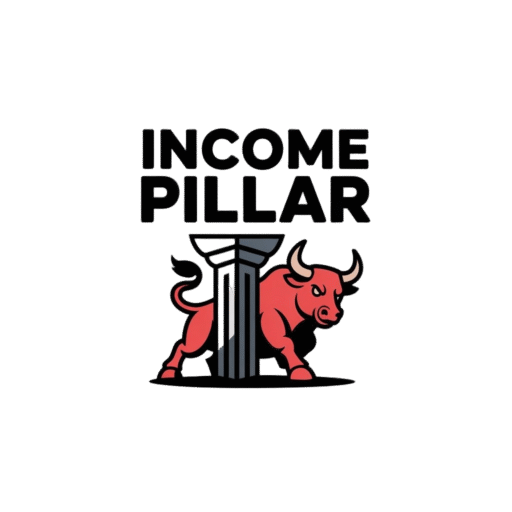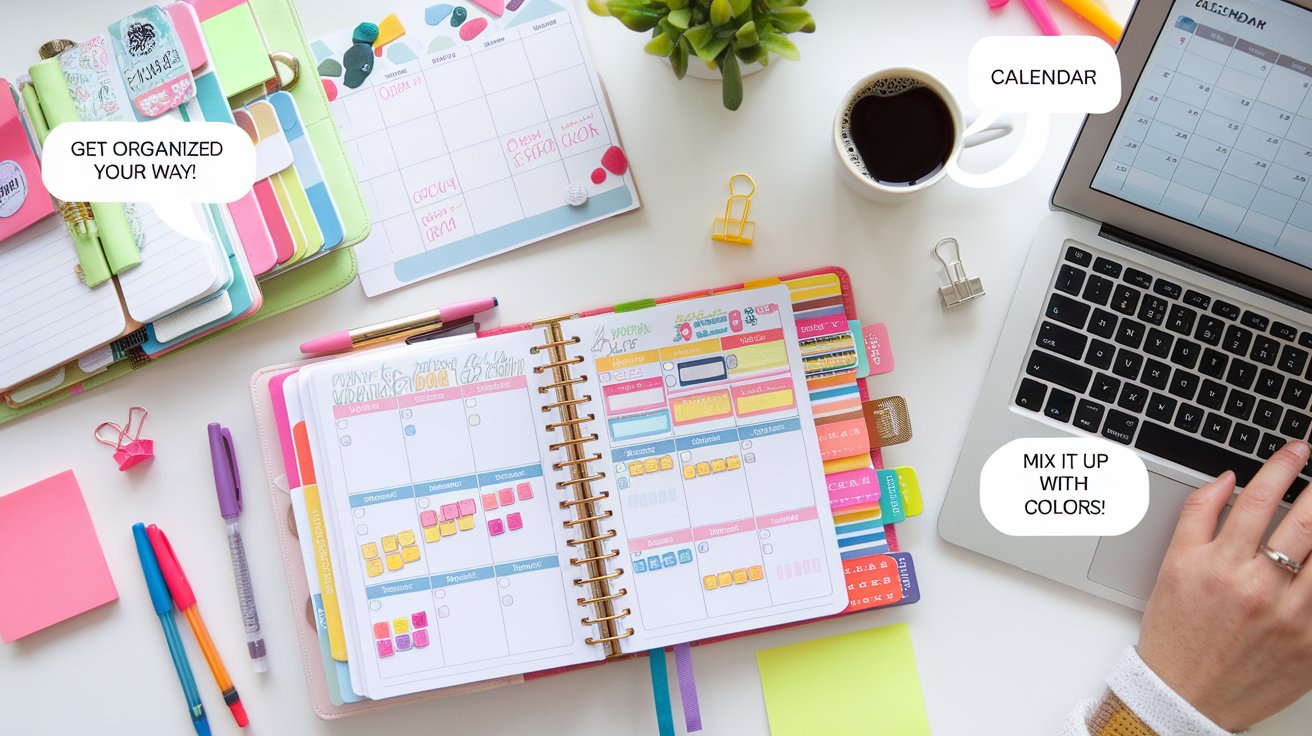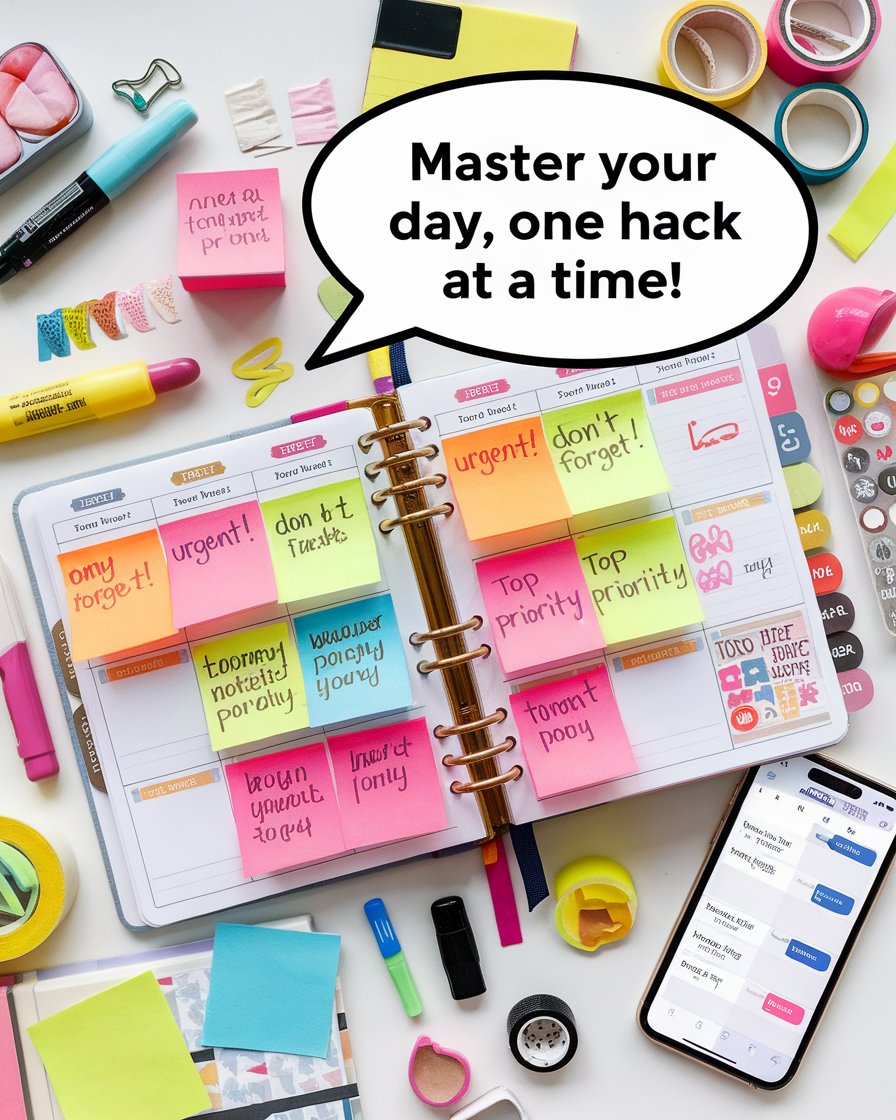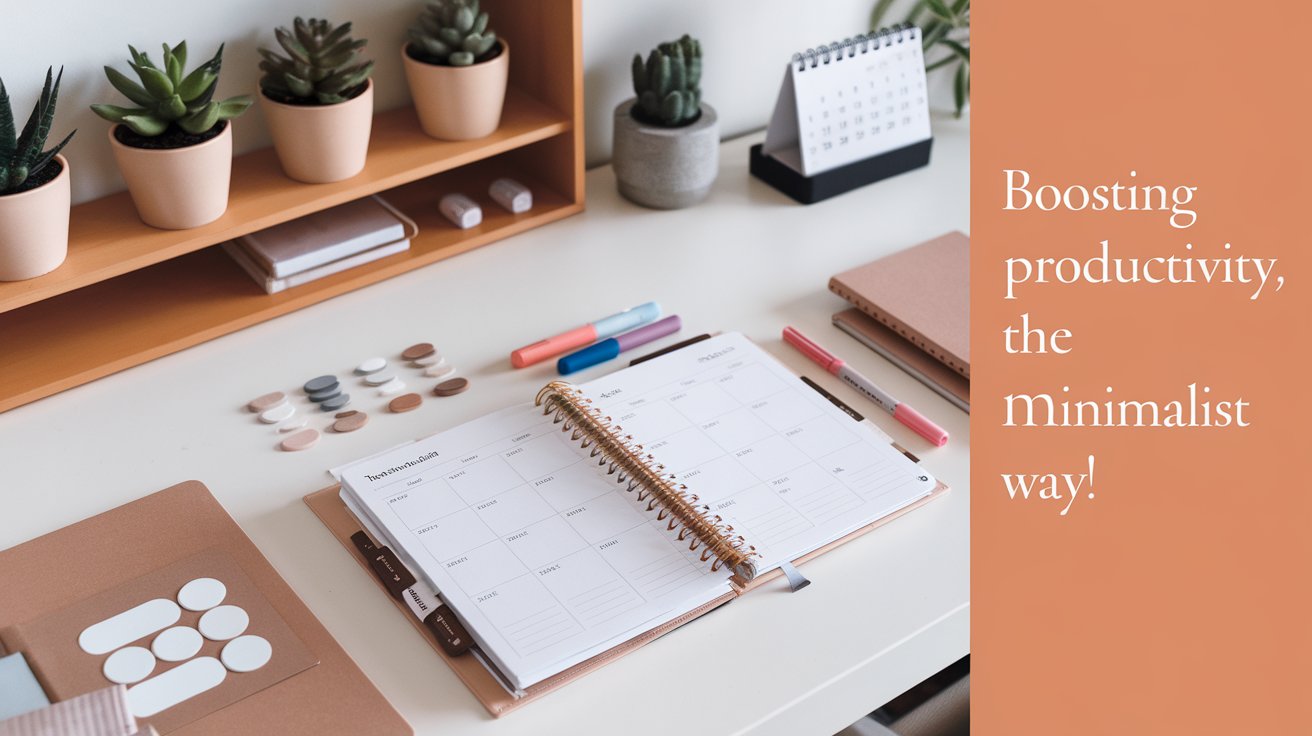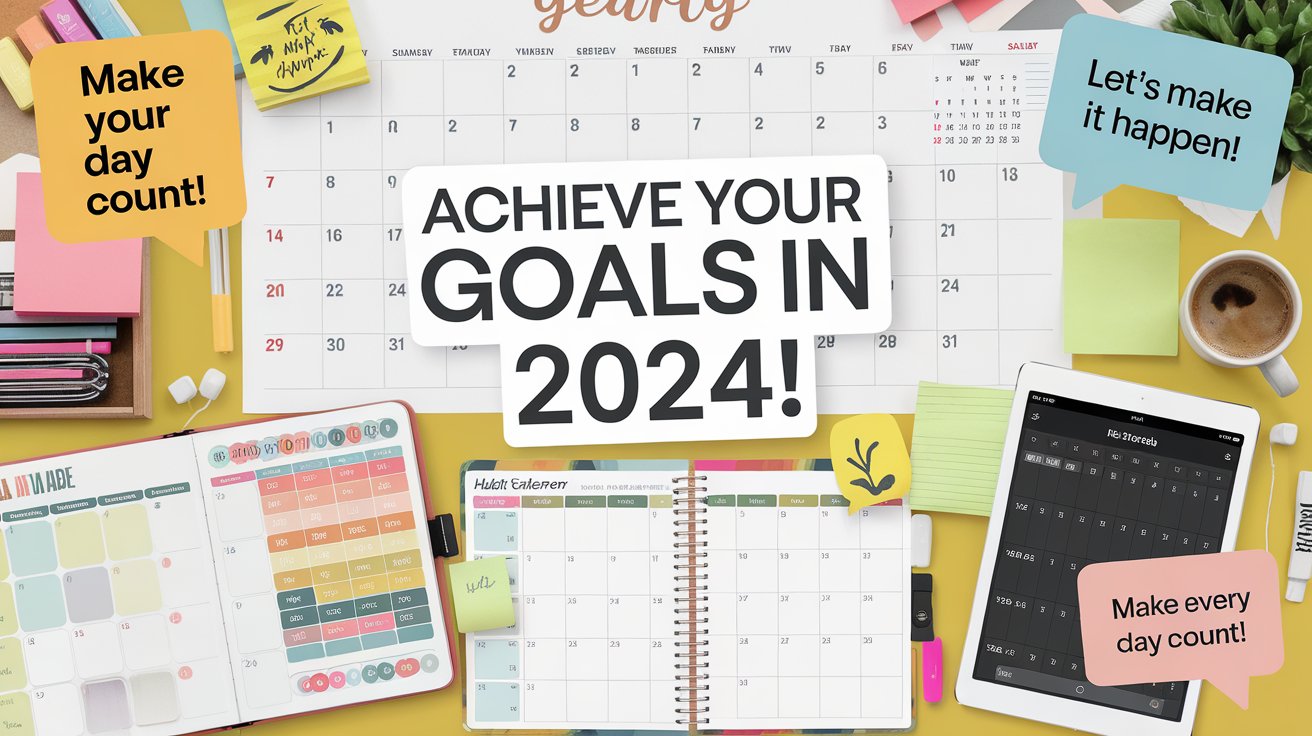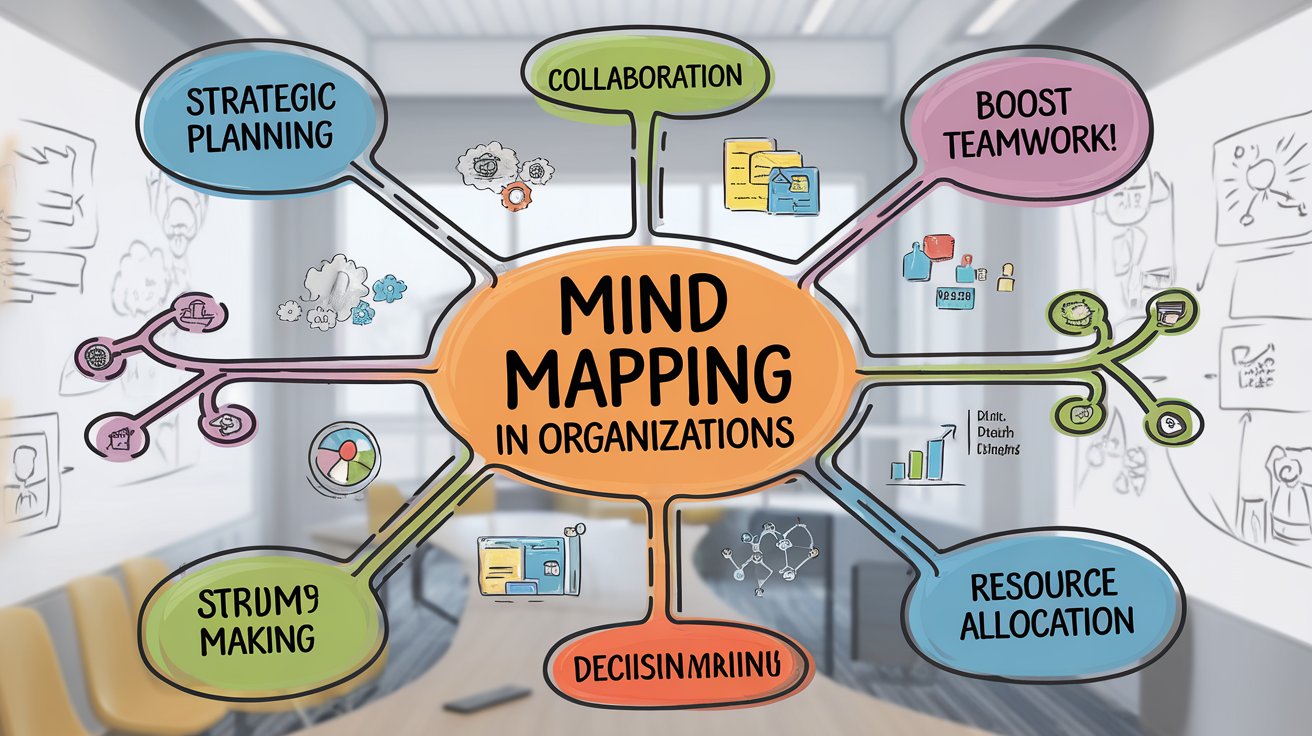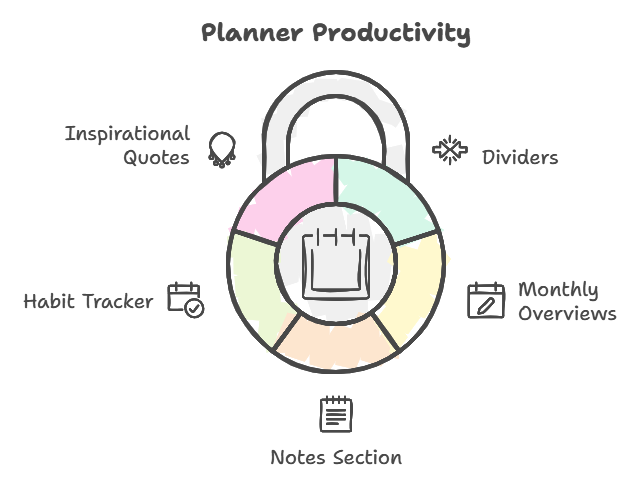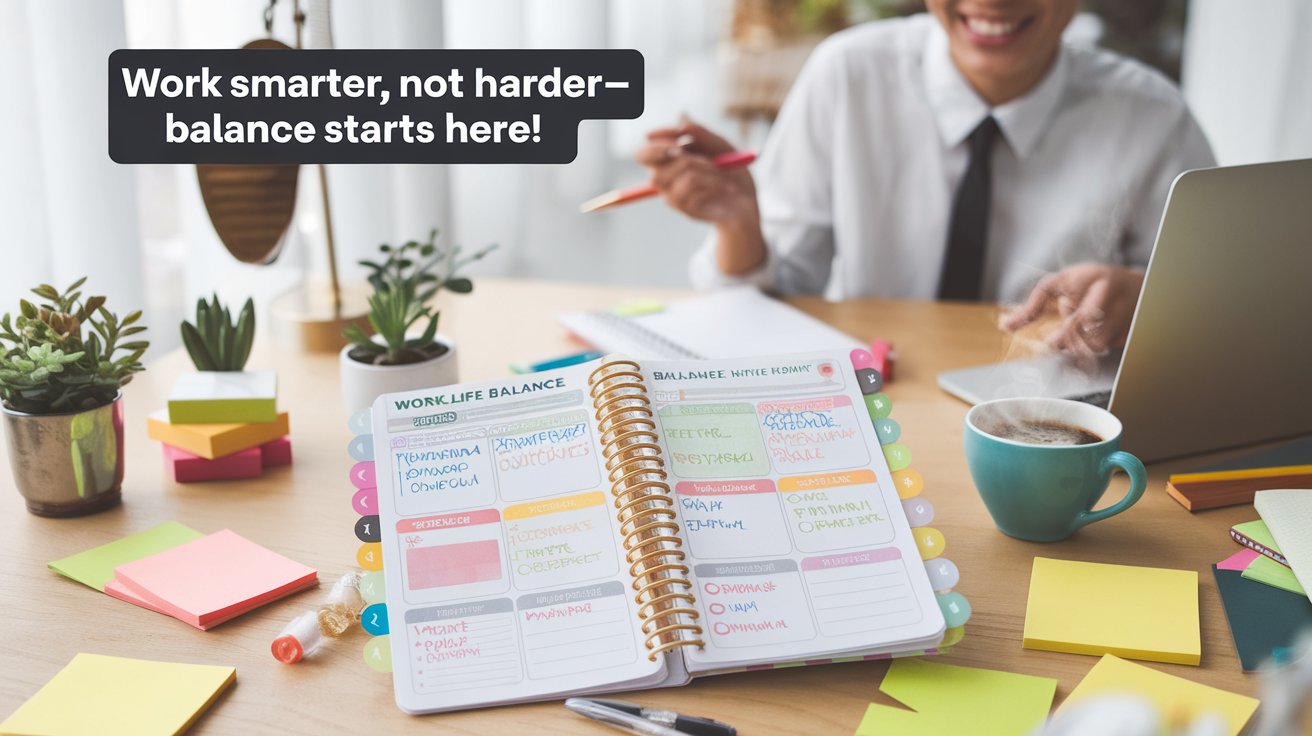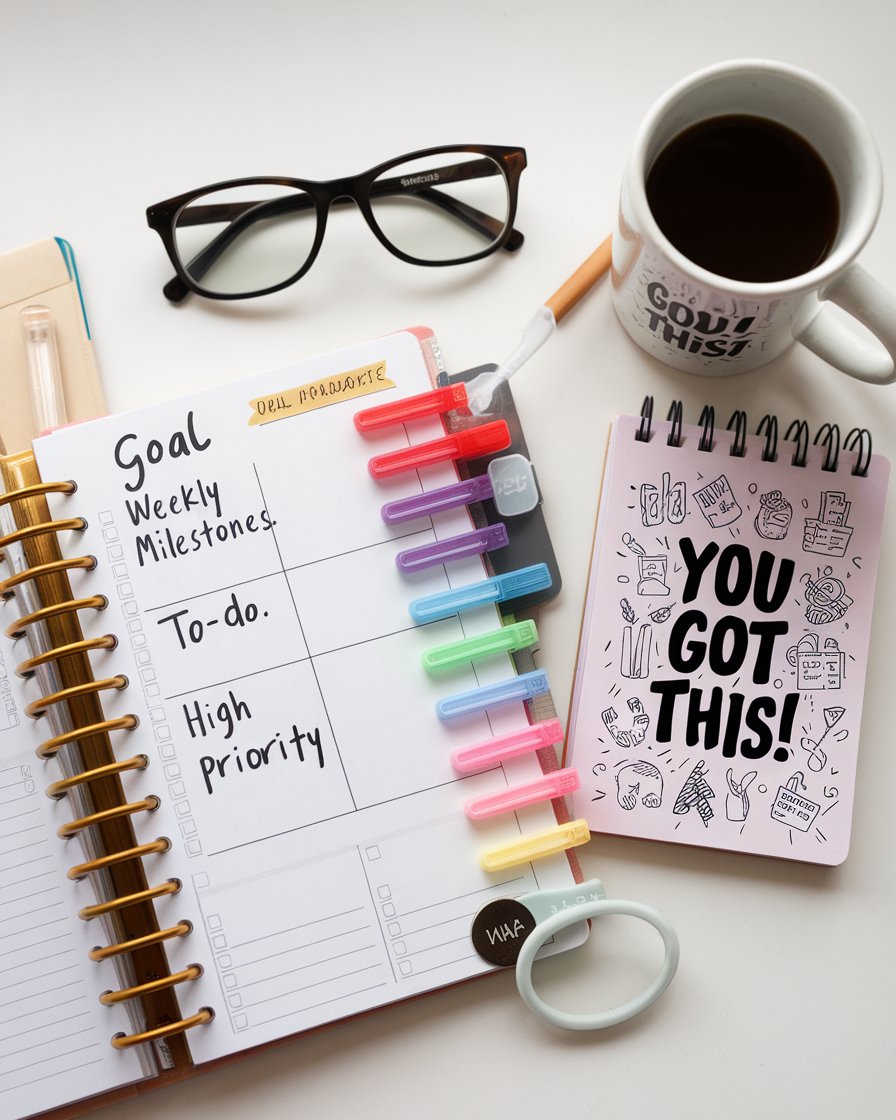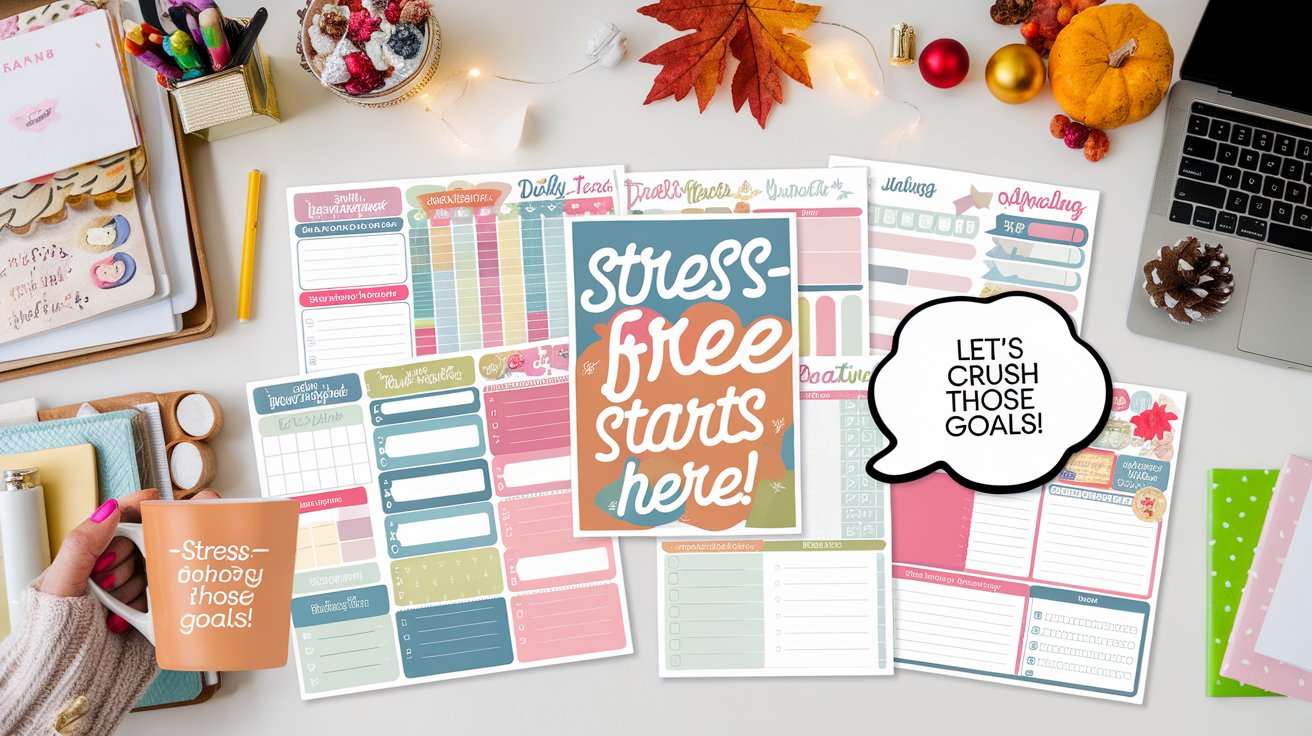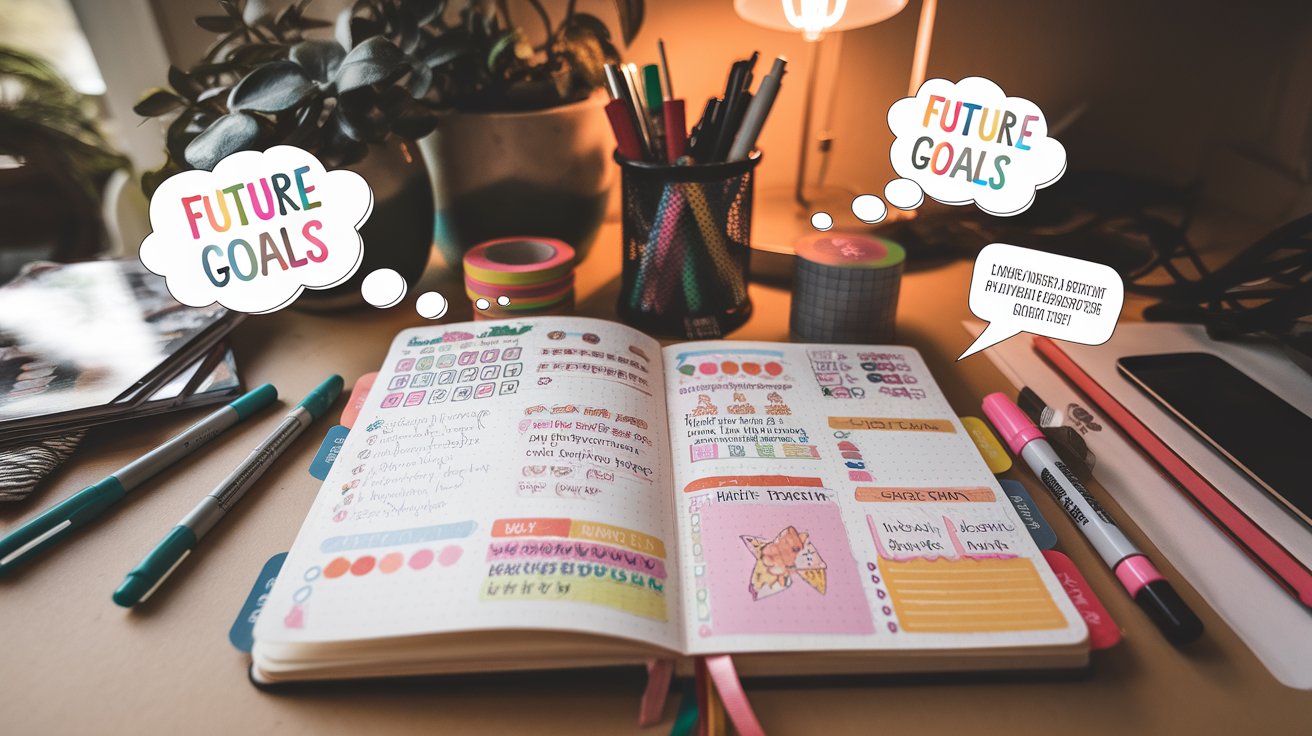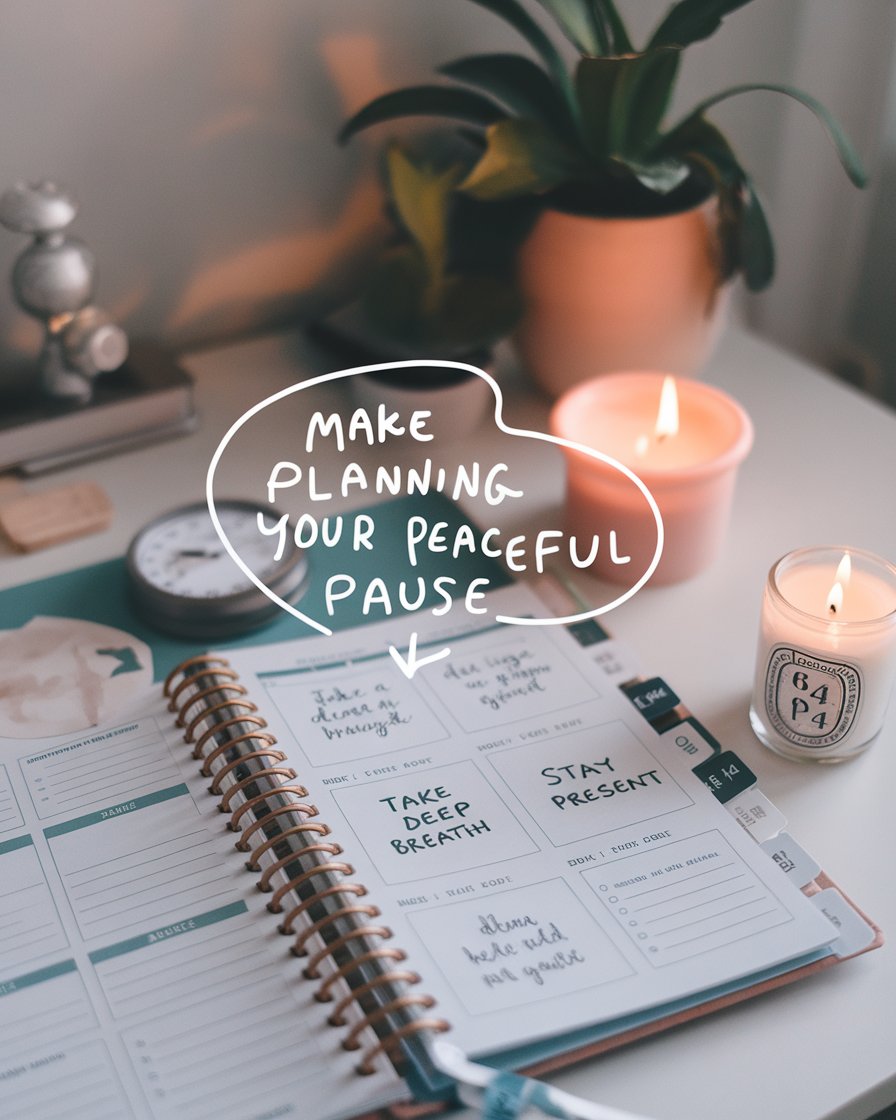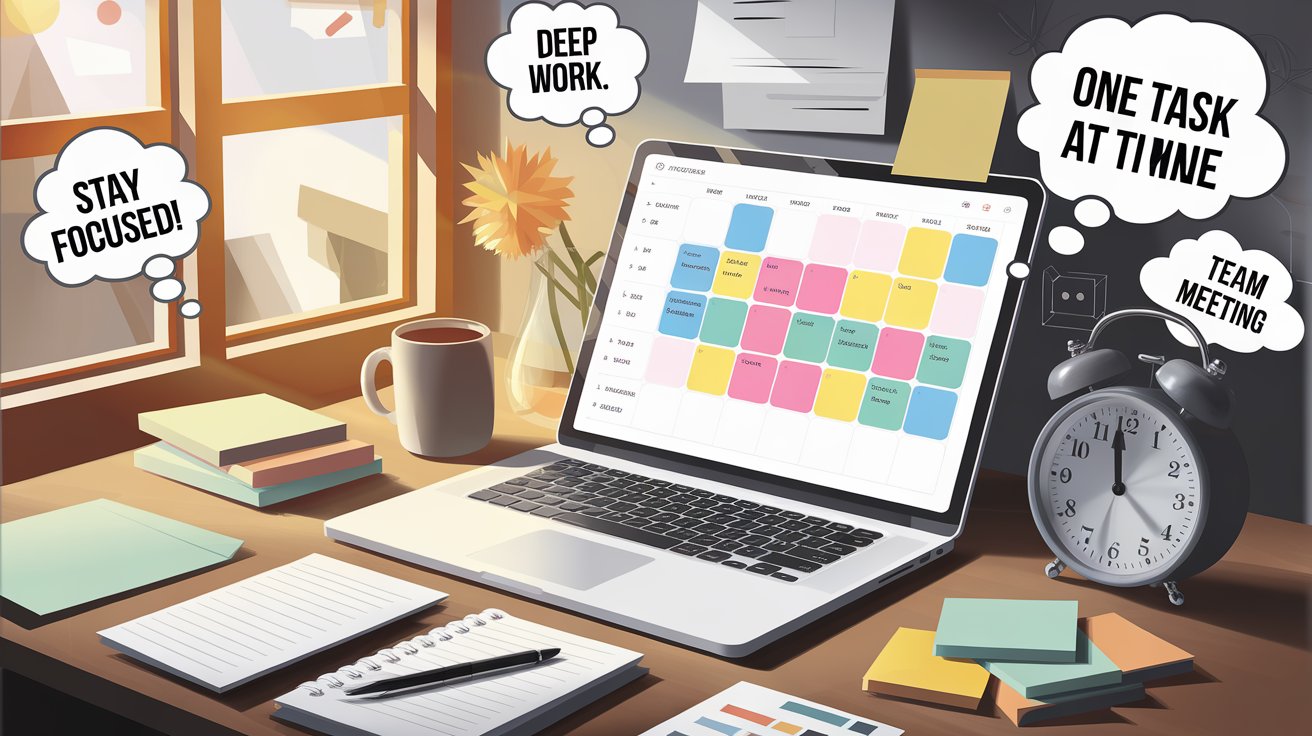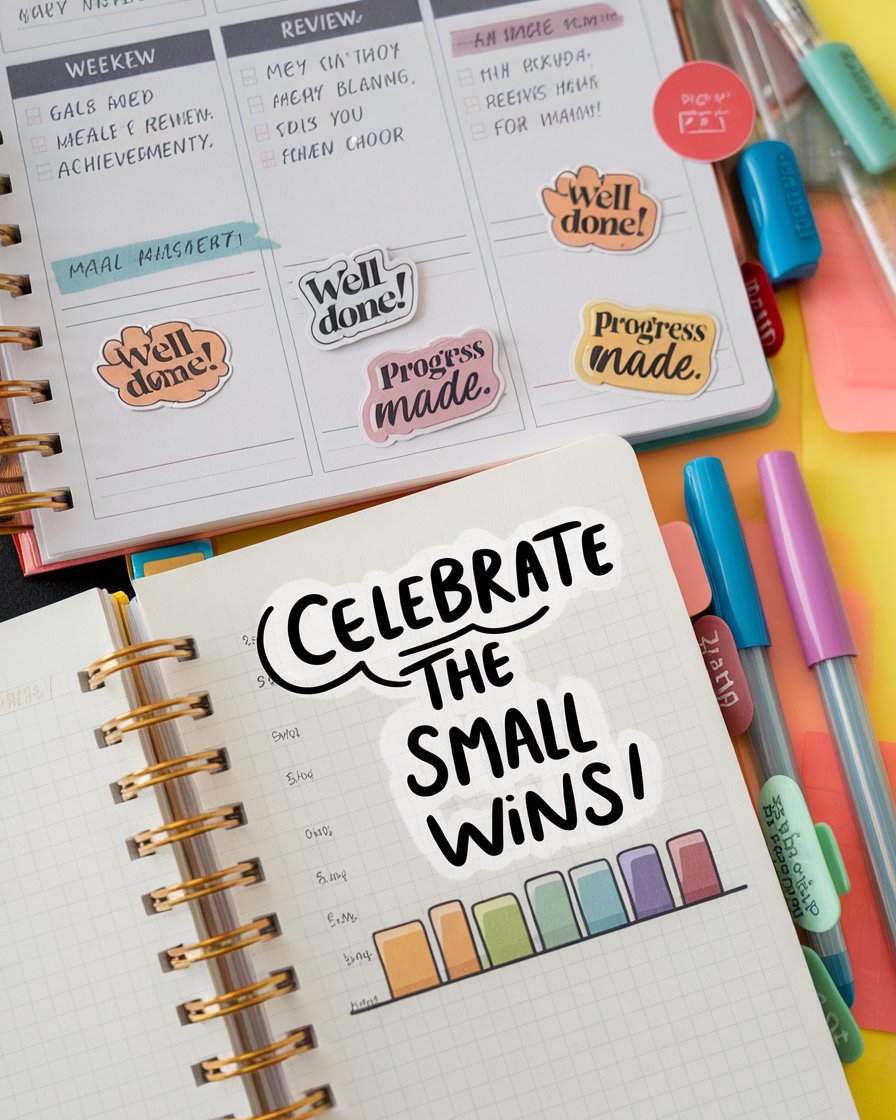Introduction
Planners have become essential tools for those aiming to stay organized, meet their goals, and add a bit of creativity to their daily routines. With just a few planner hacks and creative adjustments, it’s possible to transform a regular planner into a powerful support system. Whether it’s using sticky notes to keep urgent tasks visible or adding washi tape to mark important events, these methods not only make planning enjoyable but also highly effective. Each feature can help you stay on top of your schedule, prioritize tasks, and tackle responsibilities with confidence.
Incorporating mindfulness and regular progress reviews can take planning skills to the next level, offering both productivity and peace of mind. By setting realistic deadlines, tracking achievements, and making room for creativity, your planner becomes more than just a schedule—it’s a tool that brings joy and inspiration to everyday tasks. With these simple yet impactful tips, even the busiest days feel more manageable, leaving you ready to approach each goal with focus and clarity.
Key Takeaways
- Use sticky notes and color-coding to organize and prioritize tasks effectively.
- Personalize your planner with washi tape and stickers for a touch of creativity.
- Break down large goals into smaller, manageable tasks to stay on track.
- Include daily mindfulness prompts to reduce stress and maintain focus.
- Schedule weekly reviews to evaluate progress and make adjustments as needed.
- Celebrate small wins to build motivation and reinforce positive planning habits.
Enhancing Productivity with Planner Tools and Hacks
Using the right tools and hacks can transform a planner from a simple notebook into a powerful tool for organizing daily life. Simple additions like sticky notes, washi tape, and color-coded sections can make a planner more visually engaging and practical. For those who often juggle multiple tasks, adding sections for urgent reminders or using color codes for priority levels can significantly improve task management. By creating a customized layout that highlights essential appointments and personal goals, users can enjoy a more efficient and enjoyable planning experience. Adding personal touches like stickers can inspire creativity and make daily planning feel less like a chore and more like a satisfying ritual.
Maximizing Space with Sticky Notes and Color-Coding
Sticky notes are a versatile addition to any planner, allowing users to add temporary reminders or urgent notes without overcrowding the main pages. Using color-coded sticky notes or highlighting important tasks helps prioritize what needs immediate attention. For instance, using one color for work-related tasks and another for personal items can create a quick visual distinction. This method keeps the planner organized, while also making it easy to adjust tasks or move them around as needed.
Incorporating Creative Elements Like Washi Tape and Stickers
Adding washi tape and stickers not only makes a planner visually appealing but also helps users create personalized sections. Washi tape can be used to divide pages, mark recurring appointments, or highlight special days. Stickers can serve as reminders, motivational cues, or simply add an enjoyable decorative touch. This creative personalization helps users feel more connected to their planner, making it a tool they look forward to using daily.
Additional Tips for Enhancing Planner Productivity
1. Use Dividers to Separate Categories
Dividers are a helpful tool for creating organized sections within your planner. They allow you to separate areas for different projects, personal and work tasks, or weekly and monthly goals, making it easy to locate information quickly.
2. Utilize Monthly Overviews for Long-Term Planning
Adding a monthly overview page can help you see the bigger picture of your tasks and deadlines. This page is ideal for marking important dates, deadlines, and events, helping you stay prepared for the weeks ahead.
3. Keep a Dedicated Notes Section
A section specifically for notes allows you to jot down ideas, inspirations, or details that don’t have a designated place elsewhere in your planner. It’s useful for tracking thoughts or brainstorming without cluttering your main task list.
4. Set Up a Habit Tracker
Habit trackers are great for monitoring personal goals, like daily exercise or reading. A simple grid layout allows you to check off each day’s progress, helping reinforce positive habits over time.
5. Add Inspirational Quotes for Motivation
Including a few motivational quotes throughout your planner can help keep you inspired. Choose quotes that resonate with your goals and place them strategically to keep your spirits high.
Setting and Prioritizing Goals Effectively
A key to effective planning lies in setting realistic, actionable goals and organizing them based on priority. Breaking down larger ambitions into daily or weekly tasks can make them feel more manageable. Additionally, organizing tasks in the planner according to urgency, with high-priority tasks highlighted, ensures that crucial responsibilities are not overlooked. Having a designated section to jot down spontaneous ideas and inspirations can be helpful for tracking new goals as they emerge. By keeping both long-term and short-term objectives within view, users are likely to feel motivated and clear about their direction, helping them stay focused on achieving their goals.
Organizing Goals by Priority Levels
One effective way to tackle large goals is by setting clear priority levels within the planner. Dividing tasks by categories, such as “urgent,” “high priority,” and “secondary,” allows users to focus on what’s most important first. This layered approach ensures that essential responsibilities don’t get overlooked and enables better time management. A dedicated section for priority goals can make each day’s plan feel structured and achievable.
Breaking Down Long-Term Goals into Weekly Milestones
For larger objectives, breaking them down into smaller, weekly milestones helps maintain motivation and progress. This technique allows users to see tangible steps toward their end goals, making the process less overwhelming. By setting short-term targets, users can regularly check off accomplishments, which reinforces a sense of progress and keeps momentum going. This approach is particularly effective for maintaining consistency in long-term projects.
Case Study: How Goal Prioritization Boosted Productivity for a Small Business Owner
Jane, a small business owner, found herself overwhelmed by her daily responsibilities and struggled to keep track of her long-term goals. After researching productivity techniques, she revamped her planner to focus on goal prioritization. She began by breaking her objectives into smaller, achievable tasks and categorizing them by urgency—placing high-priority goals at the forefront of her planner. This structured approach allowed her to concentrate on key areas, such as client outreach and product development, without feeling scattered.
Within just a few weeks, Jane noticed significant improvements. She was able to track her progress effectively, meeting deadlines more consistently and feeling more in control of her workload. Regularly reviewing her planner and adjusting priorities helped her stay focused and balanced. This approach not only boosted her productivity but also reduced stress, proving that effective goal-setting and prioritization can make a profound difference in managing both short-term tasks and long-term goals.
Incorporating Mindfulness Practices into Planning
Adding mindfulness practices to the planning routine can provide a moment of calm and help reduce stress. Simple activities like taking a few deep breaths before starting the day’s plan, or jotting down a mindful intention, can enhance focus. Adding short mindfulness reminders in the planner, such as “pause and breathe” or “reflect for a minute,” can encourage users to stay present and centered throughout their day. This not only supports mental well-being but also boosts productivity, as a calm mind is better equipped to handle tasks efficiently. These mindfulness touches make planners not only functional but also supportive tools for emotional resilience.
Adding Daily Mindfulness Reminders
Inserting brief mindfulness prompts within daily planning can serve as a simple reminder to pause and reflect. Phrases like “take a moment to breathe” or “focus on one thing at a time” can help users maintain a calm mindset throughout their day. These reminders are small but meaningful ways to reduce stress, encouraging users to approach tasks with a clear, focused mind.
Using Deep Breathing as a Quick Stress-Relief Tool
Deep breathing exercises are an accessible way to reset during a busy day. Adding a note in the planner to practice deep breathing at certain times, like before starting a new project, can help keep stress levels manageable. Practicing deep breathing—even if only for a minute—can enhance clarity and boost focus, making it easier to tackle the next task.
“Mindfulness isn’t difficult; we just need to remember to do it.” — Sharon Salzberg
Tracking Progress and Reflecting on Achievements
Regularly reviewing progress is essential to maintaining a sense of accomplishment and adapting plans as needed. Setting aside time weekly or monthly for a quick reflection can help users evaluate their achievements, identify areas for improvement, and adjust their approach. By breaking large projects into smaller milestones within the planner, users can celebrate small wins along the way, which adds motivation. Tracking progress not only enhances accountability but also provides insights into what strategies are most effective. This habit of regular assessment helps create a sense of balance, ensuring that productivity remains sustainable over the long term.
Scheduling Weekly Progress Reviews
Allocating a specific day each week for progress reviews provides a structured opportunity for reflection. During this review, users can evaluate what went well, identify any areas for improvement, and adjust upcoming plans accordingly. By making these reviews a consistent part of the planning routine, users gain a clearer picture of their overall productivity and growth.
Celebrating Small Wins to Maintain Motivation
Tracking and celebrating small accomplishments helps build a positive mindset and reinforces motivation. Users can designate a section in their planner to note achievements, no matter how minor they may seem. This practice not only creates a sense of accomplishment but also encourages users to keep pushing forward, maintaining a balanced approach to productivity.
Conclusion
With the right approach, a planner can be more than just a tool for organizing tasks; it can become a central part of staying productive, mindful, and motivated. Simple additions like sticky notes, color-coded sections, and washi tape add structure and a touch of creativity to the daily routine. By prioritizing goals, breaking down tasks, and setting realistic deadlines, users can make the most of their planner to stay on track and avoid feeling overwhelmed.
Regularly reviewing progress and celebrating small wins can also contribute to a more balanced approach, allowing users to reflect on their growth and adjust their plans as needed. Incorporating mindfulness practices adds an extra layer of well-being, helping individuals to stay calm and focused, even on the busiest days. With these strategies, planners become not only functional but also enjoyable tools for personal and professional growth, supporting both productivity and peace of mind.
